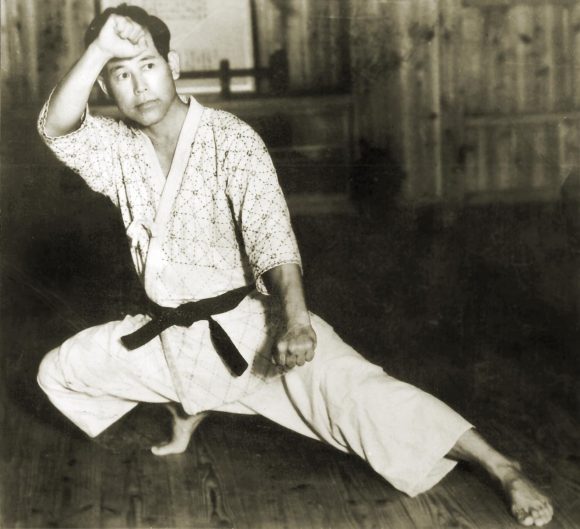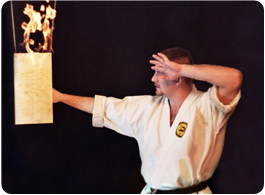LETTER 5. – About kata practice.
It is hard to disagree with most of what has been written about this subject but I have a few comments that I hope will be helpful.
I agree with Shogiki’s comment about having “faith” in practicing the kata. Faith is defined as hope in what is not seen. All of us that practice the kata without knowing the complete meaning of kata are practicing faithfully with the hope that what we are practicing will produce the results that we have predisposed in our mind. I think that this will satisfy as a definition of kata.
There are so many levels of understanding kata that you cannot limit yourself to one meaning or one by product of your effort. Again that faith word is important. All of us who have trained for some time without having to actually use some of the movements that we envision that will work are going forward on faith that the techniques will be there to provide us safety, health and well being not only form physical attack but from ourselves.
Perhaps this is what kata was designed to do.
The concept of kata is an enigma as to it’s origin and original purpose. Many followers of the practice of kata have continually preached it’s importance but only have faith that the kata practice produces what we are looking for.
So why was kata created ? The preservation of techniques, a method of teaching techniques in an orderly fashion, a method to develop the body equally or a method of teaching the body to move instinctively ? I think it is all of these but the latter is the end result.
Based on 39 years of kata training, which over half of that was on faith alone , I have found that the purpose for me is training the body to move instinctively. To achieve this instinctive movement does not necessarily require that you have the understanding of the bunkai or principles of movement but the more you mentally become aware of the purpose and methods the more effective the results are.
Does a beginner need to know the bunkai and principles of movement ? I have taught both ways. At first when I returned from Okinawa in 1971 I was so full of all the bunkai knowledge that is all I wanted to share with my students due to when I trained before going to Okinawa I had no clue of what bunkai was. After some months of trying to insure that “the” bunkai was taught as the kata was learned I found that the students would alter the movements of the kata to cause the effect of the bunkai and that is when I remembered my teacher stressing that there were many bunkai and not to change the kata movement to accommodate the bunkai movement.
Each kata movement has a purpose outside of the obvious and these movements are what teach the instinctive ness. If you have one bunkai in mind and do not concentrate on the perfection of movement then you will not develop the instinctive mind.
The focus should be on the perfection of the movement and the applications flow from the movement and creativity of the mind or the spontaneity of the situation.
“Faith without works is dead”.
Gumbatte Kudasai
Dan Smith
E-mail response from Cyberdojo. Mr. Dan Smith is Vice president: International Okinawan Shorin Ryu Seibukan Karate Assn.


